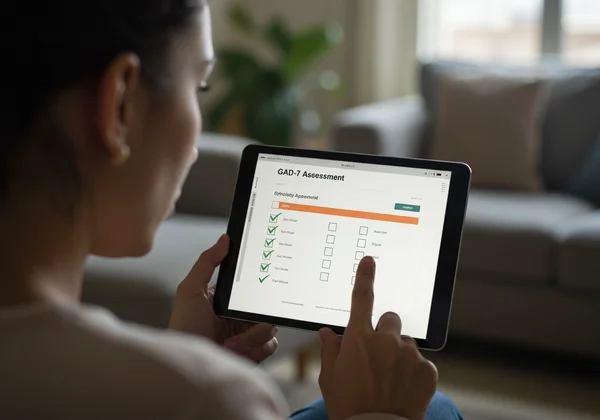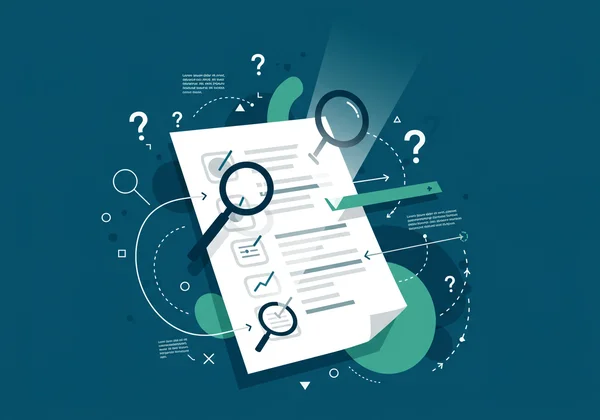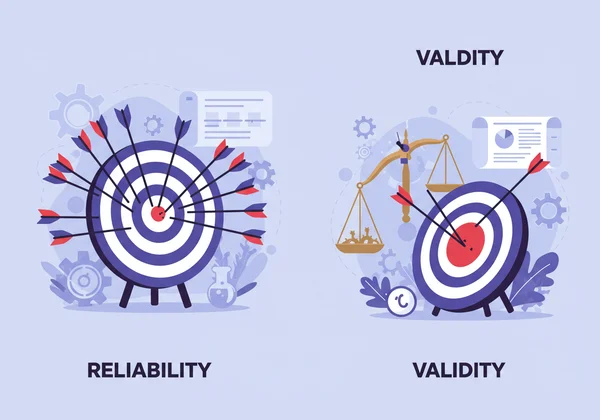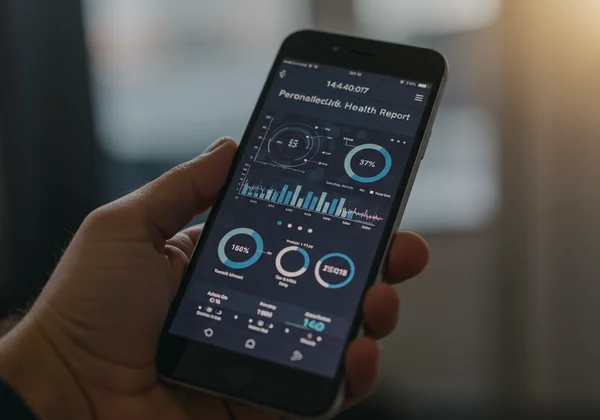GAD7: Understanding Questions & Test Accuracy
Feeling overwhelmed by anxiety symptoms? If you're wrestling with persistent worry, a racing heart, or a sense of dread you can't shake, you're not alone. The GAD7 assessment is a powerful, science-backed tool designed to help you quantify and understand these feelings. But what do the questions on this test really mean, and how reliable is it? Let's explore the GAD-7 together. We'll break down what each question truly means and reveal the solid science behind why it's such a reliable tool for understanding anxiety. What is GAD7? Think of it as a helpful guide for understanding your feelings.

This tool is more than just a score; it's a way to reflect on your recent experiences and gain clearer insight into your mental well-being. By understanding the intent behind each question, you can see how this tool can empower you with knowledge. If you're ready to begin this journey of self-discovery, you can take the free GAD7 assessment.
Decoding Each GAD-7 Question: What Your Answers Reveal
The GAD-7, or the Generalized Anxiety Disorder 7-item scale, is a brief questionnaire that assesses the severity of key anxiety symptoms over the past two weeks. Each question is carefully crafted to touch upon a different facet of the anxiety experience. Let's break down what your answers might be telling you.

The Core Symptoms: Worry, Control, & Restlessness (Questions 1-3)
The first three questions of the GAD-7 get to the heart of what many people consider the classic mental signs of anxiety. They explore the internal turmoil that can define an anxious state.
- "Feeling nervous, anxious, or on edge": Question 1 asks about your baseline level of general anxiety—that persistent feeling of being "keyed up" or unsettled.
- "Not being able to stop or control worrying": This is a hallmark of Generalized Anxiety Disorder. It measures the uncontrollability of worry, where anxious thoughts feel like they are on a relentless loop.
- "Worrying too much about different things": Here, the questionnaire explores the breadth of your worry. Anxiety often doesn't stick to one topic; it can latch onto work, health, family, and minor daily concerns, making everything feel overwhelming. This is a key measure of restlessness in the mind.
Physical & Emotional Manifestations: Irritability, Fear, & Concentration (Questions 4-6)
Anxiety isn't just in your head; it lives in your body and affects your emotions and focus. These next three questions address these physical and cognitive symptoms, which can sometimes be mistaken for other issues.
- "Trouble relaxing": Question 4 looks at the physical inability to let go and feel calm. Even when you have time to rest, anxiety can keep your muscles tense and your mind racing.
- "Being so restless that it is hard to sit still": This point addresses a more intense form of physical restlessness. It’s that antsy, can't-get-comfortable feeling that makes you want to pace or fidget constantly, often driven by an inner sense of fear.
- "Becoming easily annoyed or irritable": When your nervous system is on high alert, your patience wears thin. Consider how anxiety might be impacting your mood and interactions with others, often leading to irritability.
Impact on Daily Life: Fear & Catastrophic Thinking (Question 7)
The final and arguably most insightful question bridges the gap between your internal feelings and your external reality. It assesses the real-world consequences of your symptoms.
- "Feeling afraid as if something awful might happen": This last question examines catastrophic thinking—a common feature of anxiety where your mind jumps to the worst-case scenario. This pervasive sense of dread can be paralyzing and significantly impact on daily life, making it hard to feel safe or optimistic. It’s a crucial indicator of severity. Answering these questions honestly allows the assessment to provide a meaningful snapshot of your recent experiences.
The Science Behind the GAD-7: Accuracy & Validity Explained
A common question people have is whether an online screening tool can be trusted. When it comes to this tool, the answer is a confident yes. The GAD-7 isn't just a random set of questions; it's a scientifically validated instrument developed by Drs. Robert L. Spitzer, Kurt Kroenke, Janet B.W. Williams, and their colleagues in 2006. Its accuracy and reliability are backed by extensive research, trusted globally by professionals.

What is GAD-7 Validity and Reliability?
In the world of psychology, these terms are crucial for establishing trust. Think of it this way:
- Reliability: This refers to consistency. A reliable test produces similar results under consistent conditions. The scale has high test-retest reliability, meaning if you took it today and again tomorrow (assuming your symptoms haven't changed), your score would be very similar.
- Validity: This refers to accuracy. A valid test measures what it claims to measure. The GAD-7 has strong validity, meaning it effectively measures the severity of anxiety symptoms and correlates well with diagnoses made by clinicians.
How Accurate is the GAD-7 Test as a Screening Tool?
Research has consistently shown that the GAD-7 is an excellent screening tool. A score of 10 or higher is often used as a clinical cutoff point, where the test is very effective at identifying individuals who likely have a diagnosable anxiety disorder. It performs well in detecting not just Generalized Anxiety Disorder but also panic disorder, social anxiety, and PTSD.
However, it is vital to remember its role. It is a screener, not a diagnostic tool. It provides a valuable, objective starting point for understanding your symptoms and can help you decide if it's time to speak with a professional. The next step is to start your GAD7 assessment to get a clear picture.
The Role of the GAD-7 in Broader Mental Health Assessment
Think of the generalized anxiety disorder 7 item scale as an initial check-up. Just as a blood pressure reading can signal potential heart issues, your GAD-7 score can indicate the presence of significant anxiety. It's an essential piece of the puzzle, providing a clear, simple metric that you can share with a doctor or therapist. This score gives them a standardized and objective measure of your symptom severity, helping to facilitate a more productive conversation about your mental health.
Empowering Yourself: Beyond Just a GAD-7 Score
Understanding the questions behind the GAD-7 and its scientific accuracy transforms it from a simple quiz into a powerful tool for self-awareness. It gives you a language to describe your experiences and the confidence that your feelings are being measured by a reliable standard. This knowledge is the first step toward empowerment.
Your GAD-7 score is not a label; it is a piece of information. It's a data point that helps you see where you stand right now. On this platform, we provide not only your immediate score but also the unique option for an AI-powered personalized report. This report goes deeper, offering insights into your strengths, challenges, and actionable steps tailored to your responses. Ready to see what you can learn? Discover your results on our secure and confidential platform.

Your GAD-7 Questions Answered
Here are answers to some of the most common questions about the GAD-7 anxiety test.
How accurate is the GAD-7 test?
The GAD-7 is a highly accurate and reliable screening tool for anxiety. Studies have demonstrated its strong validity in identifying symptoms of Generalized Anxiety Disorder, panic disorder, and social anxiety. While it is very precise for screening, it is not a substitute for a formal diagnosis from a healthcare professional.
Is the GAD-7 a diagnosis?
No, the GAD-7 is not a diagnosis. It is a screening tool designed to assess the severity of anxiety symptoms. A high score suggests that you may benefit from a professional evaluation, but only a qualified doctor or mental health professional can provide an official diagnosis after a comprehensive assessment.
What are the GAD-7 score ranges for mild, moderate, severe anxiety?
The standard GAD-7 scoring interpretation is as follows:
- 0-4: Minimal anxiety
- 5-9: Mild anxiety
- 10-14: Moderate anxiety
- 15-21: Severe anxiety These ranges help you and your healthcare provider understand the intensity of your symptoms. You can get your GAD7 score instantly on our platform.
What should I do after getting my GAD-7 score?
Your next steps depend on your score and how you feel. If your score indicates moderate to severe anxiety, or if your symptoms are causing you distress regardless of the score, it is highly recommended that you share your results with a doctor or mental health professional. They can help you understand your score in the context of your life and discuss potential next steps, which could include therapy, lifestyle changes, or other treatments.